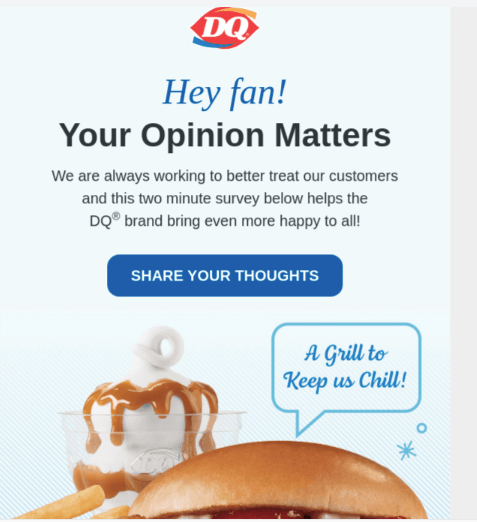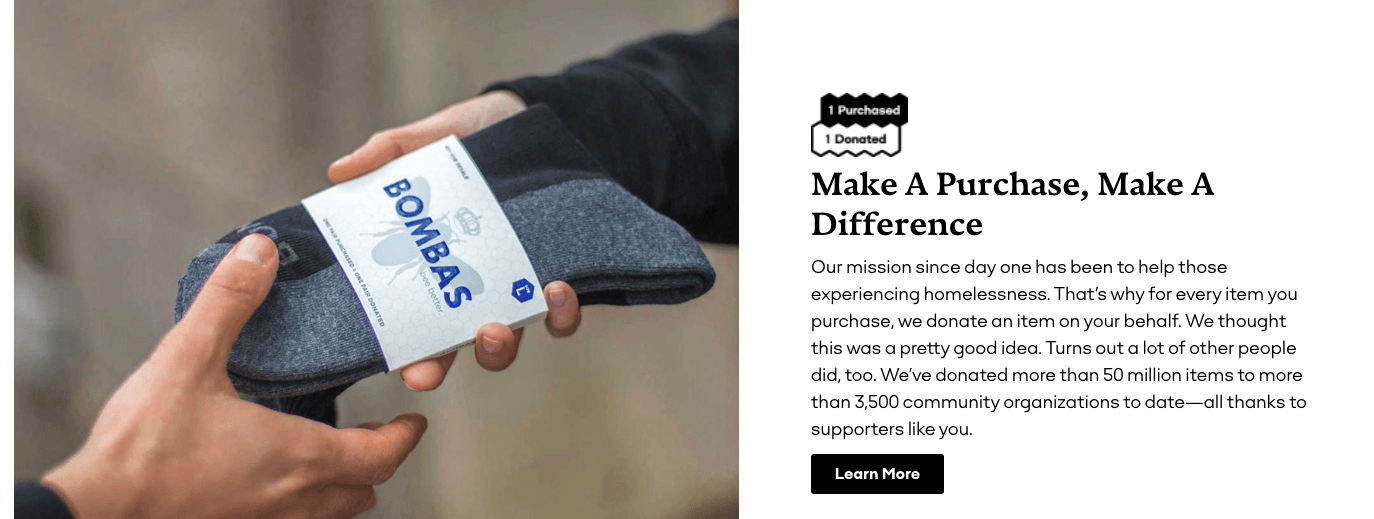-
 Published: May 8, 2022
Published: May 8, 2022
-
 7 min. read
7 min. read
-
 Macy Storm
Macy Storm Senior Content Creator
Senior Content Creator
- Macy is a marketing writer with over five years of experience creating content for dozens of industries including food and beverage, home services, and education. She also specializes in creating SEO and PPC content. Her work has been featured by Search Engine Journal, HubSpot, Entrepreneur, Clutch, and more. In her free time, Macy enjoys trying new crafts and reading comic books.
How often have you looked at a brand and had an immediate emotional reaction to seeing its marketing materials or logo? You may have thought of a happy experience or a frustrating encounter with the brand.
That perception of the company is part of your brand experience with that business.
The brand experience is critical for creating positive associations with your brand that help you turn interested prospects into loyal customers.
On this page, we’ll tell you everything you need to know about the branding experience, including:
- What is brand experience?
- Brand experience vs. user experience
- Why brand experience matters
- How to create a memorable brand experience
Keep reading to learn more!
What is brand experience?
Brand experience is the impression you create for your company’s image. Your brand experience can impact thoughts, feelings, and perceptions of your company. This experience often creates a lasting feeling with your audience and affects their view of your brand.
Brand experience vs. user experience: What’s the difference?
Now that we’ve answered, “what is brand experience,” you may wonder how it differs from user experience.
Brand experience and user experience are closely intertwined because they focus on creating a positive image and experience for your audience.
The most significant difference between user experience and brand experience is the focus. Brand experience focuses heavily on creating positive perceptions and good feelings whenever they interact with your company.
User experience focuses more on core areas like creating a functional product design, focusing on how your product benefits the consumer, and more.
The user experience impacts and influences the brand experience. If people don’t have a positive user experience, they won’t have a positive brand image of your company.
Why does brand experience matter?
If you’re on the fence about creating a brand experience strategy, you want to know why you should do it and why it’s crucial.
Creating a positive brand experience is vital for numerous reasons, including:
- It helps you connect with your audience: Creating a brand experience enables you to connect with your target audience. You promote your brand and create emotional connections with your audience, which helps garner more interest in your brand.
- It helps you create a consistent experience: When you focus on building your brand experience, you create a more consistent experience for all customers. Your brand positioning helps you keep people coming back to your brand to repeat the positive experience they had with your company.
- It helps you earn loyal customers: People are loyal to brands and how they make them feel. If you deliver a positive brand experience, you give people a reason to choose your company over the competition. It helps you build loyal and long-lasting relationships with your customers.
How to create a memorable brand experience
If you’re ready to invest in brand experience marketing, we’ve got the insight to help you master your brand experience.
Here are four tips to help you master your brand experience strategy:
1. Identify your current customers’ perceptions
Before you can start improving your brand experience, you need to understand how your customers currently perceive your business. Understanding your customers’ current branding experience helps you shape your branding strategy and determine where you fall short.
If you have an email marketing strategy in place, you can send surveys to your current subscribers and invite them to share their opinions with you. This option is great for getting detailed information about how people feel about your business.

You can also go on social media sites and look for what people say about your brand. You may search your name or a hashtag you use to see what people say about your company.
All this information is valuable for helping you understand your audience’s current experience and brand perception. You can use this information to see where you excel and fall short.
2. Appeal to your audience’s emotions
Once you’ve identified your audience’s current perception of your business, the next part of your brand experience strategy should focus on appealing to your audience’s emotions. Appealing to audience emotions is a great way to create positive connections between your brand and audience.
People often choose to buy from brands because of their connection to them. You can do anything from making people feel nostalgic to appealing to the humanitarian in them.
Bombas, for example, appeals to its audience’s humanitarian side to build a strong brand experience. For every item purchased, Bombas donates one to families in need.

They build their brand experience around doing good for communities across the country, which creates a positive brand experience for those who discover and engage with their business. It appeals to their audience’s emotions and desire to do good, which helps Bombas create a stronger brand experience.
Appealing to your audience’s emotions helps you build a strong brand experience because it makes them feel those emotions every time they see your brand. They’ll feel more connected to your company, which will help you earn more loyal customers.
3. Figure out how to stand out in your market
A key component of your brand experience strategy is to stand out in your market. Dozens of businesses try to appeal to the same audience you want to reach. If you’re not delivering a unique brand experience, you’ll blend in with your competitors and miss out on earning loyal customers.
To stand out in your market, determine what makes your brand unique. What do you offer that other brands don’t? It can be something as simple as a witty sense of humor.
When you know what makes your brand unique, you can use that information to help you stand out in your market and create a one-of-a-kind brand experience.
4. Create a consistent brand experience
One of the biggest mistakes companies make with brand experience marketing is inconsistency. Many companies fail to promote the same experience with their brand across different channels.
Creating a consistent brand experience is critical for building a positive association with your brand. You don’t want to constantly shift gears with brand experience marketing because it makes it hard for people to know your brand.
Wendy’s Twitter is an excellent example of a consistent brand experience. You can always expect sassy and funny tweets from them, no matter what they tweet.

This consistent brand experience helps people get to know Wendy’s brand and continually build loyalty to their brand.
So, when you develop your brand experience strategy, stay consistent throughout your messaging.
What is brand experience? Your key to earning more loyal customers
Brand experience marketing is critical for helping you earn loyal customers. When you deliver a positive and relatable brand experience, you attract more people interested in what you offer and get them to connect with your company.
If you need help creating a better brand experience, our team at WebFX can lend a hand. Our professional brand voice copy services help you shape your web copy into revenue-driving content that reflects your brand’s voice, tone, and values.
Our team of over 500 marketing experts knows how to create memorable brand experiences that turn prospects into customers.
Contact us online or call us today at 888-601-5359 to speak with a strategist!
-
 Macy is a marketing writer with over five years of experience creating content for dozens of industries including food and beverage, home services, and education. She also specializes in creating SEO and PPC content. Her work has been featured by Search Engine Journal, HubSpot, Entrepreneur, Clutch, and more. In her free time, Macy enjoys trying new crafts and reading comic books.
Macy is a marketing writer with over five years of experience creating content for dozens of industries including food and beverage, home services, and education. She also specializes in creating SEO and PPC content. Her work has been featured by Search Engine Journal, HubSpot, Entrepreneur, Clutch, and more. In her free time, Macy enjoys trying new crafts and reading comic books. -

WebFX is a full-service marketing agency with 1,100+ client reviews and a 4.9-star rating on Clutch! Find out how our expert team and revenue-accelerating tech can drive results for you! Learn more
Try our free Marketing Calculator
Craft a tailored online marketing strategy! Utilize our free Internet marketing calculator for a custom plan based on your location, reach, timeframe, and budget.
Plan Your Marketing Budget

Maximize Your Marketing ROI
Claim your free eBook packed with proven strategies to boost your marketing efforts.
Get the GuideTry our free Marketing Calculator
Craft a tailored online marketing strategy! Utilize our free Internet marketing calculator for a custom plan based on your location, reach, timeframe, and budget.
Plan Your Marketing Budget





